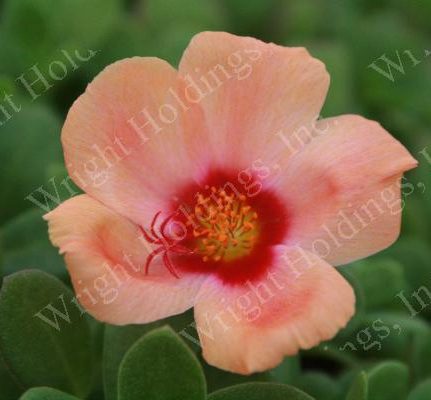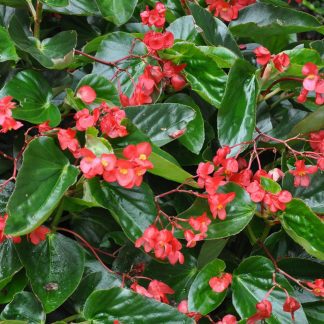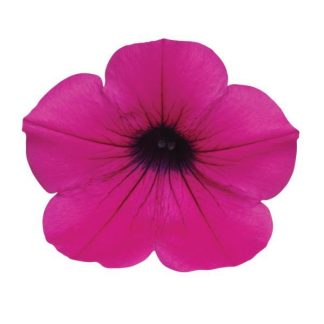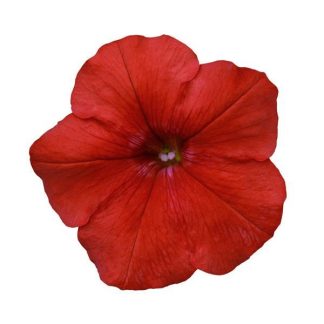Description
Purslane ‘Apricot’: Your Easy-Going, Sun-Loving Superstar
Welcome Into the World of Purslane
Picture a plant that asks for little but gives back a lot. That is purslane. Some gardeners call it Portulaca, while others call it a “sun rose.” Either way, this low-growing succulent has stolen many hearts. Today we shine our light on one special kind: Purslane ‘Apricot’. Its soft, peach-orange blooms glow like a summer sunset, and its fleshy green leaves store water the way a tiny cactus does. The result? A bright, lively mat of color that thrives in heat, grins at drought, and keeps blooming when fussier flowers fade.
Why ‘Apricot’ Stands Out
- Charming color. The petals blend shades of pastel apricot, coral, and warm pink. Each flower feels like a mini watercolor painting.
- All-day display. Flowers open with the first rays of light and stay open longer than older purslane types. You see color from breakfast until nearly supper.
- Strong and spreading. Stems trail 12 to 14 inches (30–35 cm) yet rise only 4 to 6 inches (10–15 cm) tall. They spill over baskets, creep between pavers, or tuck into rock walls.
- Heat hero. When other annuals pause in scorching July, ‘Apricot’ keeps going. Its leaves hold water, so it laughs at dry spells.
- Pollinator party. Bees buzz in early light. Butterflies drop by for midday sips. Even tiny hoverflies join the feast.
Perfect Spots to Plant
1. Containers and Hanging Baskets
Fill a sunny tub or bowl with a light potting mix. Add a few plugs of ‘Apricot’. Within weeks they form a full, cascading skirt.
2. Rock Gardens and Edging
Slide the plant between stones. The stems soften hard edges and stop soil erosion.
3. Hot, Forgotten Places
Got a strip by the driveway that bakes all day? A mailbox bed with lean, sandy soil? ‘Apricot’ says, “Put me there!”
4. Vegetable Beds
Let a row of purslane rim your raised beds. It shades the soil, holds in moisture, and gives you edible greens for salad.
Soil, Water, and Feeding
Soil should drain fast. Think sand or a cactus mix. Heavy clay is the enemy; roots stay wet too long and rot. If clay is all you have, mound up the soil or use a raised pot.
Water deeply once, then let the top inch dry. After plants settle in, water only when leaves start to lose shine. Too much water brings floppy stems and fewer blooms.
Food is a gentle affair. Mix a slow-release, balanced fertilizer (like 14-14-14) into the soil at planting. In midsummer, give a light drink of liquid bloom booster if growth seems tired. More than that is waste.
Light and Temperature
- Full sun—six hours or more—is a must. Less sun means fewer flowers.
- Ideal heat range sits between 80–95 °F (27–35 °C). Yet the plant will survive 100 °F (38 °C) with ease if the soil stays loose and dry.
- Night lows down to 40 °F (4 °C) cause no harm, but frost ends the show. In cool zones, treat purslane as an annual and enjoy its long summer run.
Simple Grooming
Deadheading? Not needed. Spent petals drop on their own. If stems grow too long, pinch them back. New shoots branch and bloom again within days.
Propagation Made Easy
- Cuttings. Snip a 3-inch tip, strip the lowest leaves, and stick it in moist sand. Roots appear in a week.
- Seeds. Tiny black seeds form in capsule pods. Collect them when pods turn papery. Sow on top of warm soil; they need light to sprout.
Troubleshooting Guide
| Problem | Cause | Fix |
|---|---|---|
| Mushy stems, foul smell | Over-watering; soil stays wet | Improve drainage, cut back water |
| Leaves yellow at tips | Too much fertilizer | Flush soil with plain water |
| Holes in leaves | Flea beetles or snails | Handpick, use organic slug bait |
| No blooms | Not enough sun | Move pot to brighter spot |
Edible, Too!
Few annuals offer beauty and a snack. Purslane leaves bring a lemony crunch rich in omega-3 fatty acids and vitamin C. Pick fresh young stems in the morning. Rinse, chop, and toss into salads, tacos, or hummus wraps. Flowers are also edible and make a playful garnish.
Fun Companion Combos
- Purslane ‘Apricot’ + Blue Lobelia: The cool blue sets off the warm peach.
- Purslane ‘Apricot’ + Sedum ‘Angelina’: Let gold, chartreuse, and apricot weave a sun-tolerant tapestry.
- Purslane ‘Apricot’ + Sweet Potato Vine ‘Blackie’: Dark leaves create drama under the bright blooms.
Seasonal Care Calendar
Spring
- Start seeds indoors 6 weeks before last frost or buy plugs.
- Harden off plants for one week.
- Plant outside once soil hits 65 °F (18 °C).
Summer
- Water when dry.
- Pinch stems mid-summer for bushy shape.
- Harvest leaves for fresh eating.
Fall
- Take cuttings for indoor pots if you want winter color on a sunny window.
- Collect seeds for next year.
- Remove plants after frost and add healthy stems to compost.
Quick-Glance Care Chart
| Need | “Apricot” Answer |
|---|---|
| Sunlight | Full sun (6–10 hrs) |
| Soil | Fast-draining, sandy |
| Water | Low once established |
| Height/Spread | 4–6 in tall / 12–14 in spread |
| Bloom Time | Late spring thru frost |
| USDA Zones | 2–11 (annual everywhere; tender perennial in 10–11) |
Bringing It All Together
We love plants that offer big reward without heavy labor. Purslane ‘Apricot’ does exactly that. Its juicy green leaves sip sunlight, store water, and power a parade of peachy blooms. We gain color, groundcover, pollinator traffic, and a tasty bonus for the kitchen. Whether you garden in a tiny balcony pot or a wide, windswept border, you can count on this sun-loving succulent to shine.
Sunlit Paths Ahead
Here’s to warm days, bright beds, and the easy joy that comes from a plant that truly works with us. Let’s tuck a few ‘Apricot’ slips into the soil and watch the garden glow.




